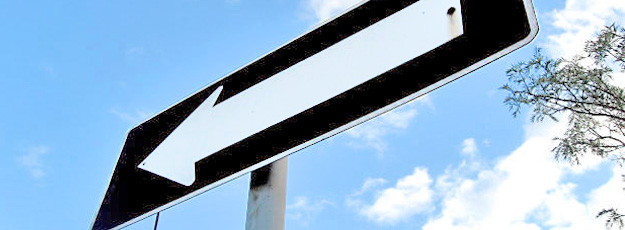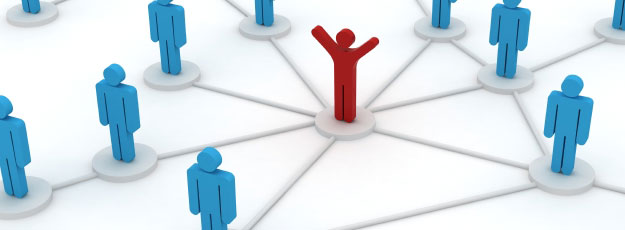8 Business Growth Goals You Can Conquer with Great Content

Content, content, content
Let’s be honest: creating great content on a regular basis can be a real drag.
After all, you didn't get into this business to be a writer any more than to be a salesperson, an accountant or a lawyer. However, just as you can't neglect to fill your sales pipeline or pay your bills or protect your company’s assets, you can't ignore your content.
Why is content so important? Because it's the fuel that propels your business growth engine. Whether you call it a blog, a magazine, a resource library or a newsletter, your content is the one weapon in your arsenal that can help you conquer nearly every challenge of growing a company in today's marketplace:
1. Increasing visibility and driving traffic

You can’t win a customer that can’t find you. And more often than not, today’s customer is looking for you online, which is why it’s critical to optimize your organic search ranking.
People tend to think of SEO as if it's some occult form of black magic. While the practice of SEO is certainly complex, the one thing you must remember is that even though search engines are driven by intricate algorithms, all of those metrics and calculations are founded in delivering high-quality, relevant results that will be the most useful to real people.
Real people value good content. As a result, so do Google, Bing and Yahoo.
There’s no more rock-solid SEO strategy than publishing great original content on a regular basis. As you develop valuable, (legitimately) keyword-rich content that becomes popular through page views and inbound links, your level of perceived authority on that subject will increase in the eyes of the search engines, which in turn will boost your ranking in searches that pertain to your core offering. And the higher you climb in the rankings, the more potential customers will be able to find you.
2. Attracting more targeted traffic

If all you want is to send your site visit stats through the roof, there are plenty of attention-grabbing stunts you can pull to draw sheer numbers.
But numbers don't necessarily equate to dollars. For your business to grow, you need to consistently attract the types of people to your site whose needs and interests are the most closely aligned with the products or services you have to offer.
This is where your content steps up to the plate. When you publish unique, insightful information that appeals to your tribe, you'll attract visitors that will become your fans, spread the word about you, bring their friends and, ultimately, turn into customers.
3. Building trust and converting customers

Bringing visitors to your site is just the first step. Your job isn’t done until you convince them to entrust their hard-earned dollars to you.
The task of building trust with a prospect when you're standing in front of them is a relatively straightforward proposition.
However, you don't always have the luxury of a face-to-face encounter to make a first impression. Instead, more often than not, you're relegated to building trust through a computer screen. And thanks to all the Internet con artists and shysters out there, the burden of proof you must overcome to establish your trustworthiness is a large one.
So what options do you have? You can always sing your own praises in the most flattering and superlative fashion. Of course, that doesn't hold much sway in the absence of solid evidence to support your claims.
Don’t just cross your fingers and hope that your customers will buy into your sales pitch. Instead, let your content make the case for you.
Your content is the proving ground for your expertise. If you’re a big phony and you don’t know what you’re talking about, it will become obvious pretty quickly. But if you have something of genuine value to offer, and you give it away willingly upfront before you ask anyone to spend a dime, that’s where real online trust-building begins.
4. Differentiating your company from your competitors

Your company doesn’t exist in a vacuum. There are plenty of other people who do what you do and sell what you sell. For your business to grow, you must be able to make a compelling case for why people should buy from you rather than the other guys.
This is a challenge that dates back to the genesis of marketing, but in the Age of Information, it’s one that great content can go along way toward helping you overcome.
Make no mistake: your content is not your sales pitch. But if you can provide truly useful information that your customers can’t find elsewhere, you’re making an implicit case for the benefits of doing business with you.
For example, let’s say you’re a general contractor, and you’ve created a comprehensive online resource library for homeowners that covers all things home improvement-related: the latest renovation trends, how-tos for simple DIY projects, advice on upgrades that deliver the best ROI, etc.
This is the type of information that your potential clients will truly value. And by demonstrating your authority, you’ll prove that what you have to offer is much more than just a common commodity, which will even help you fend off lower-priced competitors. Your customers won’t care as much about saving a few dollars if they feel more confident knowing their project is in the hands of a trustworthy expert.
5. Generating word-of-mouth marketing

You live in the world of your products and services. You eat, breathe and sleep your business. Talking about what you do is second nature to you.
The same does not hold true for your customers. They don't go through life looking for opportunities to be your walking, talking billboard.
However, great content has the power to get people talking. Everyone loves information that gives them ways to save time and money, makes life easier or gets their creative ideas flowing.
And in the culture of the Web, we're all hard-wired to be like-button-pushers and retweeters. So when you give your customers good stuff that sparks their interest, they’ll be instinctively inclined to share it with others, and your name will travel far and wide right along with the content you’ve created as it passes through their networks and their friends' networks, too.
6. Expanding your customer base

The interminable task of business growth is identifying sources of new potential customers and finding ways to get in front of them. This quest is what's kept the purveyors of mailing lists in business for decades.
But in today's Web marketing universe, you don't have to shell out thousands of dollars to gain exposure to new customers. Communities exist everywhere around the Web, and your content is your foot in the door.
All you have to do is identify those whose tribes’ interests align with your products or services, and offer to provide content for their websites. In exchange for giving away your valuable expertise, you'll have the opportunity to take the stage in front of a brand new audience of potential customers, who will be more receptive to what you have to say due to the cache of trust conveyed to you by the established leader of that tribe.
If you’re an event planner, for example, you could approach the owner of a popular local blog targeted to moms and offer to write an article on a timely topic of interest, such as “10 Trendy Summer Birthday Party Themes.”
Without ever having to make a direct pitch for your services, you’ll suddenly have a new tribe of potential customers who know who you are, and if you’ve done a good job, will likely be inclined to click through to your website to see what other ideas and information you have to offer. In terms of exposure to your target demographic, your content-driven approach will deliver a greater ROI than traditional advertising ever could.
7. Building community and keeping customers engaged

You wouldn’t hand a customer a brochure and expect them to wake up every day excited to read it over and over again.
The same holds true for your website. You can’t expect to build community around a vanilla site that’s all about you and your product or service offering. No matter how beautifully crafted it might be, there's nothing to keep people coming back. They'll get the basic information they need, and they'll move on.
Great content is the key to transforming your company’s website into the hub of a thriving online community. People don’t want to interact with brands; they want to interact with other people. Content puts a human face on your company and makes your brand approachable. It’s the common ground between your company and your customers.
And not only is your content the spark that ignites conversation, but it's also the fuel on the fire that keeps it going. When you recognize and respond to those who comment on and share your posts, you make them feel like they’re part of something meaningful and give them added motivation to invite others to join the party.
8. Driving innovation

One of the best fringe benefits of the task of researching and writing top-quality content is that it forces you to keep up with what’s going on in your industry.
When you’re trying to build your business, it’s easy to get tunnel vision. You get so deeply immersed in the day-to-day nuts and bolts that you don’t make time for the big-picture thinking that’s required to reach the next level.
Creating content requires you to be a perpetual student of what you do; to be constantly reading and exploring so that you have fresh, exciting ideas to share with your readers.
This, in turn, makes you a sharper, more confident, more agile businessperson. Rather than doing things as they’ve always been done, you’ll be on top of the trends and ahead of the curve, with an overabundance of inspiration for what to try next.
What you put in is what you get out
Just like anything else, what you put into your content it is exactly what you'll get out of it.
If you want your content to help you meet your business growth goals, it has to be the real deal. It has to be meaningful. It has to be unique. It has to be too valuable to ignore. It has to address real problems and issues that are relevant to your customers. It has to offer practical solutions and insightful tips that are so good they’ll eagerly await your next post and gladly pass along your links to others.
Creating content of this caliber takes time. It takes hard work. Most importantly it takes discipline and commitment. If you don't make yourself buckle down and hammer out the good stuff week after week and month after month, you’ll quickly lose your audience to someone who will.
On the other hand, when you faithfully publish the type of content your customers crave, the reward is a sales engine that’s so powerful and so robust, you’ll put your company in a competitive position anyone would envy.
Read more:
Shut Up and Blog Already
Great authors are defined by their ability to set fire to the written word. All too often in today's digital information age, that creative spark is stifled, leaving the Web littered with content that is lifeless and ineffectual. Fame Foundry's Author has made it his mission to revive the act of writing as an art form, harnessing the power of language to command attention and ignite a following. It's the difference between telling a story and building a legend.